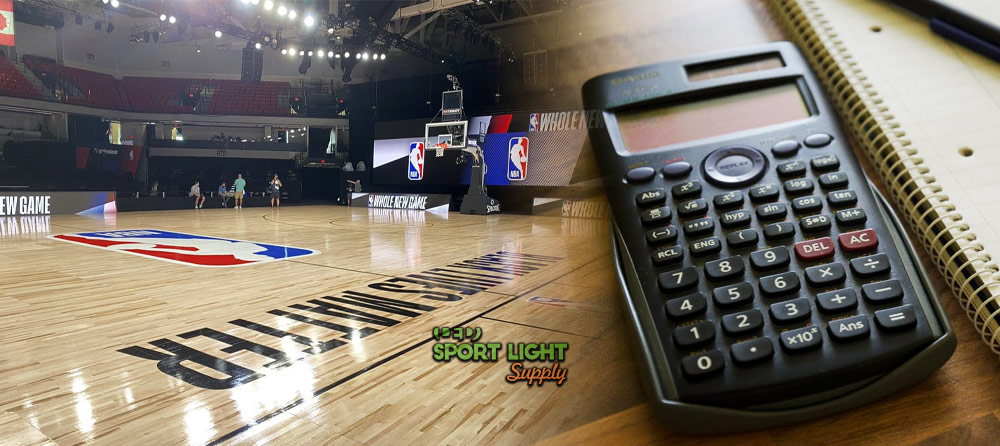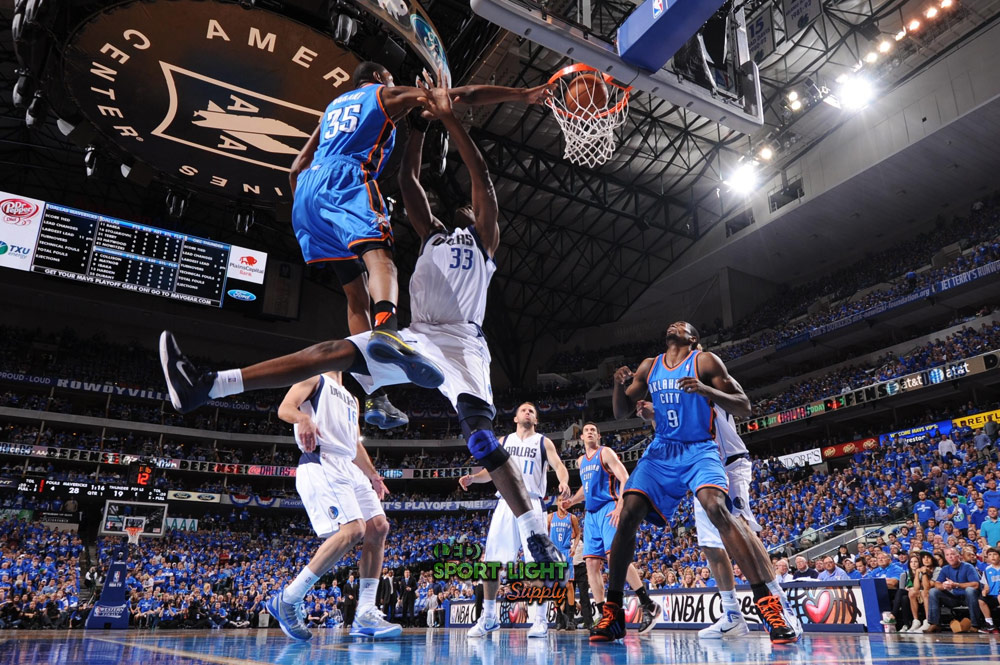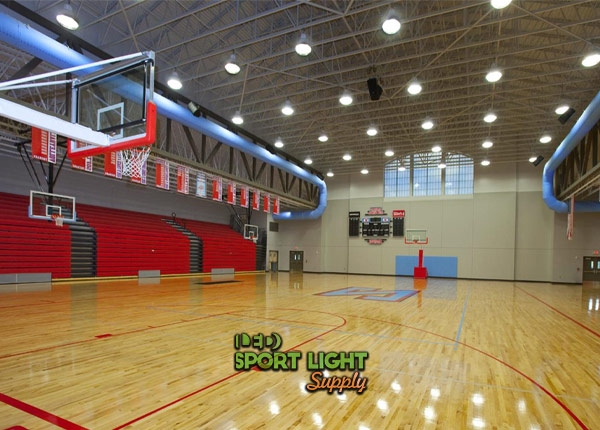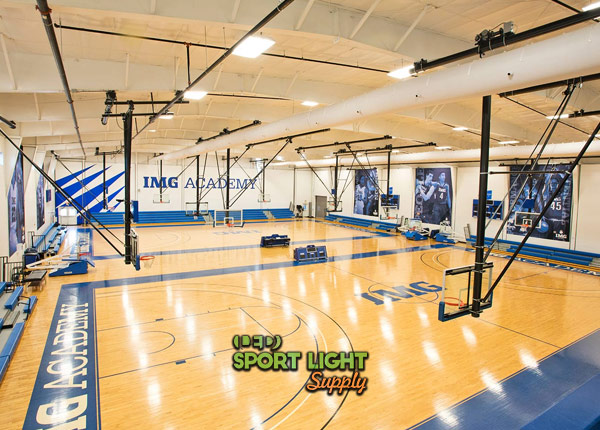To ensure your basketball arena operates efficiently and economically, choosing the most appropriate lighting system is crucial. Initially, it might seem counterintuitive to consider that a high-quality lighting system could lead to lower running costs. However, you’ll find that merely swapping out old fixtures for LED lights is not a comprehensive solution.
To help you navigate this complex topic, we’ve created an in-depth guide that breaks down the financial considerations of basketball arena lighting into four key areas. We’ll start with an overview of various lighting systems and their associated costs, outlining the necessary initial steps for implementing an effective lighting solution. Next, we’ll explore the most significant factors that impact the overall expenses of basketball arena lighting.
Table of Contents
ToggleThe Average Cost of Basketball Court Lighting

When calculating the cost of basketball court lighting, it’s essential to recognize the range of requirements dictated by different levels of play. These standards, set by basketball associations, outline the necessary brightness and quality of lighting to ensure optimal performance and viewer experience.
Class I Lighting Requirements

Class I lighting is used for high-profile events such as international games and top-tier league events, including televised basketball matches. This class demands a lux standard of 750 lux. To determine the lighting needs, you first calculate the total lumens required. For a standard court, this is given by the formula: 750 lux × 436 square meters (court area) × 1.2 (light loss factor), resulting in 392,400 lumens.
Next, to estimate the wattage needed, divide the total lumens by the luminous efficacy of high-quality LED lights, which is about 170 lumens per watt. This calculation yields approximately 2,308 watts. For a complete lighting system, costs can range from $1,150 to $3,450 per court, translating to about $0.5 to $1.5 per watt.

Class II Lighting Requirements
Class II lighting applies to regional championships and other lower-profile games that still require a high standard of illumination, albeit less intense than Class I. The lux standard here is set at 500 lux. Using the same formula, the total lumens needed for such an event is 500 lux × 436 square meters × 1.2, equaling 261,600 lumens.
For Class II lighting, the required wattage is around 1,539 watts, assuming the same efficiency of 170 lumens per watt. The cost for LED fixtures in this category ranges from $800 to $2,850. While cheaper options are available, they may compromise on quality and durability.

Class III Lighting Requirements
Class III lighting is suitable for training sessions and low-level competitions, such as local club matches that do not require the high standards of professional games. The lux requirement for this class is 200 lux. Calculating the total lumens needed: 200 lux × 436 square meters × 1.2 results in 104,640 lumens.
With a similar luminous efficacy of 170 lumens per watt, the total wattage required is approximately 616 watts. The cost for LED lighting systems in this category typically ranges from $200 to $500. This lower cost reflects the reduced lighting demands and the smaller scale of installations often used for recreational activities.
Factors Affecting Basketball Stadium Lighting Costs
The cost of lighting a basketball stadium is influenced by several critical factors, each contributing to the overall expenditure. Understanding these factors can help you make informed decisions and manage your budget effectively.
Level of Competition
The level of competition at a basketball game significantly impacts the lighting requirements and associated costs. As teams advance to higher levels of play, such as professional leagues or international tournaments, the demands for illumination increase. High-profile events require more intense lighting to meet broadcasting standards and enhance visibility. This may necessitate upgrading your existing lighting system or even designing a completely new one.
For instance, FIBA’s regulations for Class I and II games mandate specific lighting standards, including permanent wood or synthetic flooring, which can affect glare and require photometric analysis. Renovations to the stadium may also be necessary to comply with these standards, adding to the overall costs.
Basketball Court Size
The size of the basketball court plays a crucial role in determining lighting costs. Standard courts differ in dimensions depending on the league or level of play. The NBA, for example, requires a court size of 94 by 50 feet, while FIBA’s standard is slightly smaller at 92 by 49 feet. For training or recreational courts, which might be smaller or even half-courts, lighting needs and costs can vary significantly.
The larger the court, the more lighting fixtures are required to ensure uniform illumination across the entire playing area. This increased coverage impacts both the initial installation costs and ongoing energy expenses.
Type of Lights
The type of lighting fixtures chosen for your basketball stadium will greatly affect the budget. Traditional lighting options, such as Metal Halide (MH) and Mercury Vapor (MV) lamps, may have lower initial costs but are less energy-efficient and have higher operating expenses. In contrast, LED lights, though more expensive initially, offer superior energy efficiency, longer lifespan, and lower maintenance costs.
LED technology has advanced to eliminate safety concerns associated with older lighting systems, such as harmful ultraviolet rays from MV lamps or fire hazards from High-Pressure Sodium (HPS) bulbs. While LEDs have a higher upfront cost due to the semiconductor materials used, their long-term benefits make them a preferred choice for modern sports lighting.
Installation Height
The height at which lights are installed can significantly impact the cost of the lighting system. Higher installation points result in greater light loss due to increased distance and light dispersion. This necessitates the use of more fixtures to achieve the desired illumination level.
Additionally, the paint and materials used on walls and ceilings can affect how light is reflected or absorbed, influencing the overall lighting uniformity. For outdoor stadiums, maintaining adequate lighting while managing maintenance costs requires careful consideration of fixture placement and type.
Lamp Origin
The origin of the lamps can affect both the cost and quality of your lighting system. Lighting fixtures manufactured in countries with lower production costs, such as China, may offer lower prices but can vary in quality compared to those produced in the US or Western countries. Differences in build quality, efficiency, and warranty support are common.
When sourcing lighting from abroad, ensure thorough testing and verification of the products. Establishing reliable communication with the seller or manufacturer can prevent potential issues and ensure that the products meet your expectations. Bulk purchasing can also lead to cost savings, particularly for non-critical areas like parking lots.
Miscellaneous Factors
Several additional factors can influence the cost of basketball stadium lighting. For top-tier competitions, achieving vertical uniformity is essential, which may require specialized fixtures to prevent glare and ensure even lighting above the players’ heads.
Anti-glare lighting options and advanced lighting control systems, such as dimmable lights, can enhance the overall experience but come with higher initial costs. In outdoor settings, installing lightning rods to protect fixtures and players, as well as improving air ventilation indoors to prevent overheating, are necessary considerations that affect both initial setup and long-term maintenance costs.
Cost of Running Basketball Court Lighting
Running a basketball court lighting system involves various recurring expenses beyond the initial setup costs. To get a complete picture of these costs, it’s essential to consider the life cycle cost, which encompasses all expenses related to the lighting system over its lifespan. Here’s a breakdown of the primary components that influence the ongoing cost of operating basketball court lighting:
Operating Cost
The operating cost of lighting a basketball court is largely influenced by the energy consumption of the lighting system, which is determined by the lux requirement for the level of competition. For example, a Class I basketball game demands a minimum of 750 lux, typically requiring a lighting system that consumes around 3,500 watts.
To calculate the energy cost, you need to consider the electricity rate in your area. In many regions of the US, commercial electricity rates are relatively low. For instance, if the electricity rate is $0.10 per kilowatt-hour (kWh), the cost to run a 3,500-watt lighting system would be determined by dividing the wattage by 1,000 to convert it to kilowatts, and then multiplying by the electricity rate. This calculation is expressed as follows: (3,500 watts / 1,000) × $0.10, which equals $0.35 per hour.
This formula offers a simple method for estimating your hourly operating cost based on the wattage of your lighting system and the local electricity rate. If the lux requirements change for special events or high-intensity games, you can adjust the calculation accordingly to reflect the new power consumption and costs.
Cost of Each Unit
The cost of each lighting unit influences both the initial investment and ongoing expenses related to maintenance and replacement. The type of lighting chosen plays a critical role in determining these costs.
LED Flood Lights typically cost between $150 and $500 per unit. Although the initial expenditure may seem higher compared to other lighting technologies, LEDs offer significant long-term benefits. Their energy efficiency and longevity contribute to cost savings over time. LED flood lights can last up to ten times longer than traditional lighting options, which reduces the frequency of replacements. Additionally, their lower power consumption results in decreased energy bills, further enhancing their cost-effectiveness.
Metal Halide (MH) Lights, on the other hand, are generally less expensive initially. However, they come with higher operational costs due to their greater energy consumption and shorter lifespan. Metal halide lights require more frequent bulb replacements, leading to increased maintenance costs. Over time, the higher energy consumption and more frequent replacements make MH lights a less economical choice compared to LEDs.
Energy and Labor Costs
Energy costs are calculated based on the electricity rate and the total wattage used by the lighting system. Given that LEDs are more energy-efficient, they typically result in lower energy expenses compared to traditional lighting options.
Labor costs encompass various aspects of managing the lighting system. The installation costs include the expenses associated with setting up the lighting system. These costs can vary depending on the complexity of the installation and the labor rates in your area. Complex installations may require specialized skills or additional time, leading to higher overall costs.
Maintenance costs involve the regular upkeep required to ensure the lighting system operates efficiently. This maintenance includes tasks such as cleaning, repairs, and replacing components as needed. The cost of maintenance labor is usually charged per hour and can fluctuate based on the frequency and complexity of the required tasks. Obtaining quotes from multiple service providers can help manage these costs effectively. Regular maintenance is crucial to prevent unexpected breakdowns and to ensure the lighting system performs optimally.
Disposal Costs
As the lighting system reaches the end of its life cycle, disposal costs become a consideration. Replacement of components involves disposing of bulbs, ballasts, and other parts, which can be both costly and environmentally challenging. Traditional lighting systems, in particular, may involve complex disposal processes for hazardous materials.
Disposal services are required to manage the removal of old lighting components. The cost of these services varies depending on local regulations and the type of materials being disposed of. For instance, mercury-vapor lamps, which contain hazardous materials, require special handling. Understanding local disposal fees and regulations is essential for managing these costs effectively.
How to Save on Running Costs
Using LED Lights to Reduce Wattage
Electricity is typically the largest expense for indoor lighting, while outdoor lighting often incurs higher initial costs due to the construction of high masts and other infrastructure. To cut down on running costs, opting for LED fixtures is highly effective. LED lights consume less power compared to traditional lighting systems, which directly translates to lower electricity bills.
When selecting LED lights, pay close attention to the power consumption ratings of the fixtures and drivers. LED lights are available with various bases, drivers, and lamp holders, making them versatile for retrofitting existing systems. You can replace old Metal Halide lamps and ballasts with new LED drivers and bulbs or use adapters to fit LED lights into older sockets. By reducing wattage in this manner, you’ll experience a significant decrease in power consumption without the need for cool-down periods.
Adding Smart Stadium Lighting Control
The evolution of lighting control systems has drastically reduced power wastage through automation. Modern smart lighting controls offer a range of features to further economize on energy use. For instance, motion sensors can enhance security, while solar sensors automatically adjust lighting based on natural light levels. Timers enable the creation of different lighting profiles for various events or training sessions, ensuring that lights are only used when necessary.
Advanced control systems allow for the automation of lighting shutdowns through light control panels or remote access via Bluetooth or Wi-Fi. This setup can also integrate with distributed audio systems, providing synchronized control of both lighting and sound. Dimming switches and lumen management presets contribute to energy savings by adjusting lighting levels according to activity requirements.
Utilizing DIALux for Efficient Design
DIALux is a powerful tool for designing and optimizing lighting systems, making it easier to estimate the number of lights and their wattage needs. This photometric software helps prevent energy wastage and ensures efficient lighting design. With DIALux, you can accurately plan the lighting layout for both interior and exterior spaces, including complex projects like entire basketball stadiums.
While the software offers a comprehensive solution for lighting design, it is essential to work with an experienced lighting designer to avoid errors. DIALux facilitates precise calculations, including emergency lighting and illuminance analysis, but requires expert handling. Investing in professional services can save time and money compared to learning and using the software independently.
Avoiding Indirect Lighting Approaches
Direct lighting involves placing light sources where they are visible and focused on the desired surfaces. This method provides clear illumination but can lead to glare and uneven light distribution. In contrast, indirect lighting hides light sources behind walls or ceilings, with light reflecting off these surfaces to illuminate the space more evenly.
However, indirect lighting often results in higher power consumption due to light loss from reflections. To counteract this, multiple high-power LED lights are necessary, which can increase energy costs. By switching to direct lighting, you can significantly reduce electricity usage. Although adjustments to the lighting layout may be needed, the overall reduction in power consumption typically outweighs the additional time and labor costs.
Cost of Installing Basketball Court Lighting
The cost of installing lighting for a basketball court can vary widely based on several factors. For a straightforward indoor basketball court, the initial installation cost typically hovers around $2,000. This estimate covers basic lighting needs but does not account for advanced features or customizations.
Outdoor lighting systems generally come with higher costs. If you require a new high mast lighting system for an outdoor court, the expenses will increase significantly. Additionally, the terrain conditions and specific site requirements can influence the final price. On average, maintenance costs for outdoor lighting are about $1,500 to $2,000 every 3 to 5 years, which should be factored into the overall budget.
When upgrading an existing system with LED retrofits, you can expect substantial savings compared to installing a new system from scratch. LED retrofits often reduce both initial and long-term costs, thanks to their energy efficiency and lower maintenance requirements.
Conclusion
Selecting the right lighting system for your basketball court is pivotal to achieving both cost-effectiveness and optimal performance. While initial costs can vary based on the type of system—ranging from $2,000 for indoor setups to significantly higher expenses for outdoor installations with high mast systems—investing in quality, energy-efficient solutions like LEDs can lead to substantial long-term savings. By considering factors such as the level of competition, court size, and type of lighting, and incorporating advanced features like smart controls, you can ensure that your lighting system meets both performance and budgetary needs. Planning ahead and choosing wisely will ultimately enhance the overall efficiency and longevity of your basketball court lighting.
